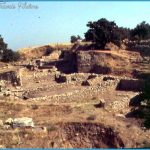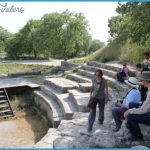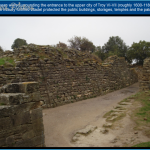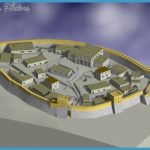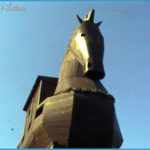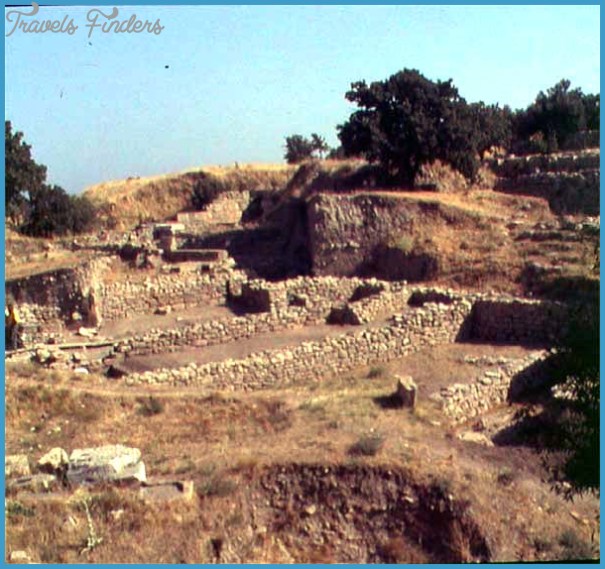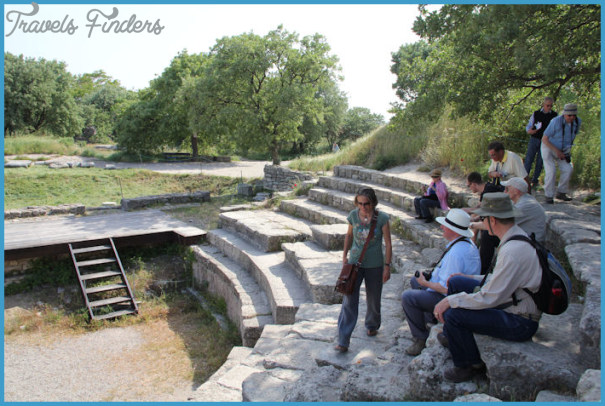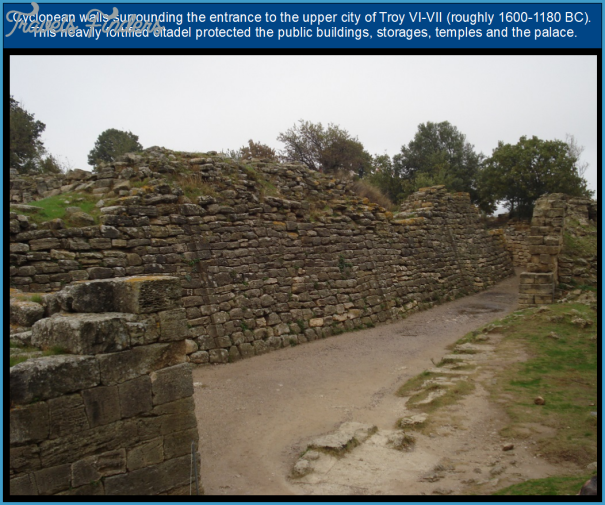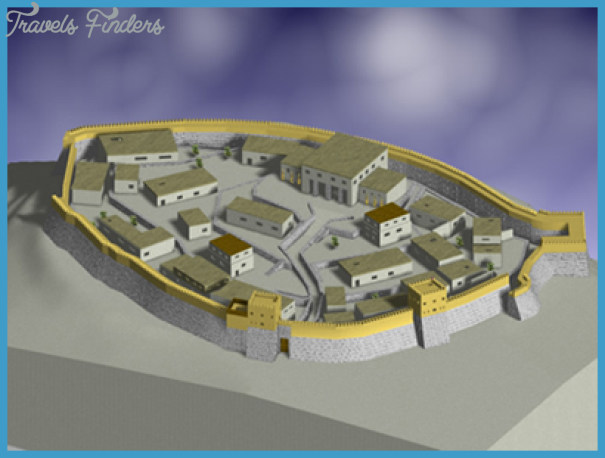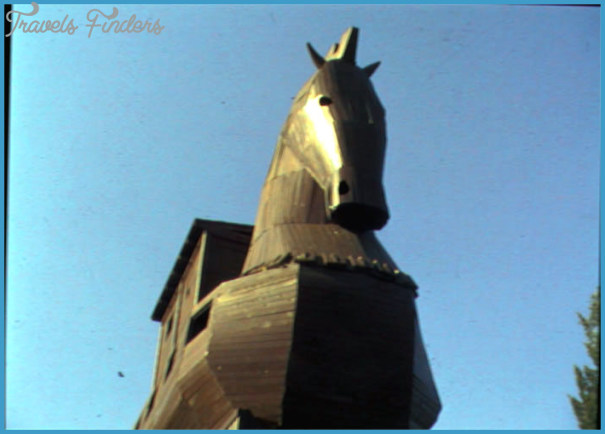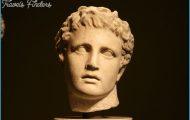There are several contradictory myths about Troy’s foundation. One tells that Cretans escaping famine first occupied the land. When mice overran their camp, they recalled an oracle advising them to settle where earth-born adversaries’ attacked them. So they built a temple to Apollo Smintheus (‘Mouse-God’), subdued the Troad (as the region is called), named the local mountain Ida (like the one in Crete), and thrived under their king, Teucer. Others maintained that Teucer was an Athenian, who founded a colony in the Troad and passed the crown to an Arcadian called Dardanus – but the Romans claimed that Dardanus was an Italian-born Etruscan.
Foundations of Troy & Divine Interventions Photo Gallery
Troy and the Troad were named from Dardanus’ grandson Troas, himself the father of Ilus, from whom the city took its other name of Ilion. Like Cadmus at Thebes, Ilus was told by the gods to found a city where a piebald cow lay down to sleep. It chose the summit of the low Hill of Ate (‘destructive infatuation’), where Ilus erected a temple to Athene. This housed the Palladium, an olive-wood statue of Athene, which had fallen from the skies and would protect Troy as long as Troy protected it.
Ilus’ brother, too, the handsome, Ganymede was god-kissed. Seeing him herding cattle on Mount Ida, Zeus transformed himself into an eagle, swooped down and abducted him to Mount Olympus, to serve him as cupbearer. In the divine bedchamber Ganymede performed those boyish duties, too, associated with his Latin name, Catamitus. In compensation, Zeus gave his father Troas twelve white horses, sired by the north wind, Boreas.
Another Trojan prince, Tithonus, was less fortunate. Eos, the rosy-fingered goddess of the dawn, abducted him to be her lover, persuading Zeus to grant him eternal life. She should have asked for everlasting youth: when Tithonus was so old he could no longer move, Eos locked him in a cell, where he chattered on incessantly, the strength of his once lissom limbs all gone’. In sympathy, Zeus transformed him into a cicada.
The gods were less content with another Trojan king. When Ilus’ son Laomedon built walls around Troy’s citadel, he hired two tireless workmen for a modest daily rate – Poseidon and Apollo, sentenced to serve him for a year as punishment for trying to topple Zeus. While Poseidon laboured (helped by Aegina’s King Aeacus), Apollo tended Troy’s flocks, but in the end Laomedon refused to pay them In retribution, Poseidon sent a sea-monster to ravage the Troad, demanding that Ilus sacrifice his daughter, Hesione.
Enter Heracles. On his way back to Tiryns from one of his labours, he found Hesione, richly bejewelled but otherwise naked, chained to a rock, awaiting the monster. Chivalrously, he released her, agreeing with Laomedon to kill the creature in return for Hesione’s hand in marriage – and the white horses that Zeus had given Troas. Then Heracles attacked the creature, leaping down its throat, hacking at its innards until it died. But when he demanded payment from Laomedon, the king reneged.
So Heracles returned to Greece, raised an army, sailed in six ships back to Troy and attacked the city. Led by Telamon, the son of Aeacus (who had built this section), they stormed Troy’s western walls where they were weakest and (in Homer’s poignant words) made desolate her streets’. The only survivor was the young prince Podarces, who had championed Heracles when Laomedon refused to pay him. Now he became Troy’s king, changed his name to Priam (‘Redeemed’), and rebuilt the city. As for Hesione, Heracles gave her to Telamon; but he kept the horses.


